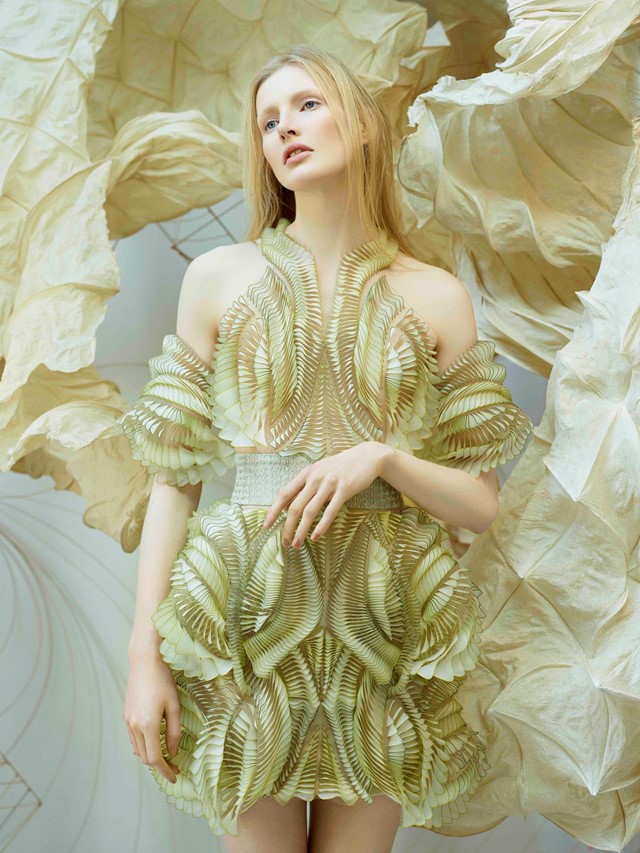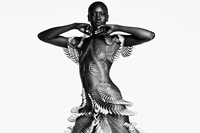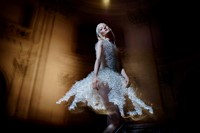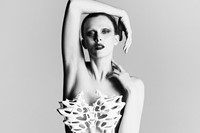As her new book Sculpting the Senses is published, the groundbreaking designer discusses skydiving, fashion as art, and why her work connects to science and architecture
Over the past 15 years, designer Iris Van Herpen has redefined the contours of haute couture, lacing science, technology, architecture, art – and even skydiving – into her complex creations. Her latest book, Sculpting the Senses, published by Lannoo on the occasion of her current retrospective at the Musée des Arts Décoratifs in Paris, carefully unpacks the designer’s “special way of working” through 100 of her designs. “The book lives beyond and is independent of the exhibition,” Van Herpen explains. “It’s allowed me to dive into the process of combining the traditional craftsmanship of haute couture with modern technology.”
To condense such a significant career into one book without flattening the intricacies and intelligence of Van Herpen’s work was no easy feat. “We [Van Herpen and curator Cloé Pitiot] worked alongside each for five years,” the designer recalls. “It was exceptional to have that time. We really got to know each other, and it allowed Cloé to write about my work in such a beautiful way.” Each image is accompanied by a technical explanation of the design, interwoven with text from the likes of Hans Ulrich Obrist and Tilda Swinton.
Below, AnOther caught up with Iris Van Herpen to discuss how Sculpting the Senses came to life.
Madeleine Rothery: How was it to reflect back on your career in such a detailed way?
Iris Van Herpen: It’s been nice as I don’t usually have the time to do that. I’m always working on the next project and in my mind, I’m always a year or two ahead. I really had a moment where I could dive into the archives alongside the curators to see and to stand still with everything that we’ve been doing. So many memories came up – it’s like a diary that you’re going through. It’s confronting as well, but in a good way. I’ve seen my own development, like where I would get my inspiration, how I was working, and how it is now.
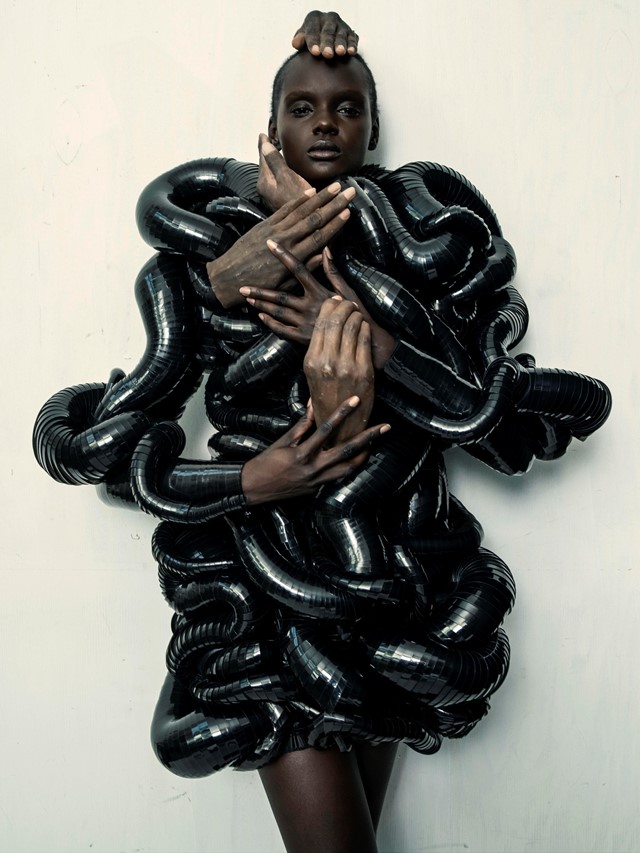
MR: Has the book helped you draw connections between collections that perhaps are only noticeable with hindsight?
IVH: Absolutely, this book has made me realise the dynamics of the creative process. Of course, as a designer or as an artist, you’re making your work, but I realise more and more that the works I’m making are also creating me. They are dynamic entities that go out into the world and take on their own life. They are being worn by different types of people and I get this feedback from them. It’s really precious because it’s all of these energies that I’m taking back in and that becomes a base to create new pieces. So, it’s a very complex and dynamic ecosystem where I’ve learnt that the pieces that I’m making are forming and shaping me as well.
MR: How is the book organised?
IVH: The pieces are not shown by collection, or even by year, as is usually the case with a retrospective. We looked at concepts that are transforming over time but keep coming back to me, and from that, we formed the nine themes of the book. For example, we start with water as it’s a material that continues to influence me – like 15 years ago when I worked on my first pieces, but also very recently with my Carte Blanche project where I made a whole collection for underwater. The book really became a personal study of my own work. I learnt to see so many inspirations and patterns that keep coming back to me throughout the years in different forms and in different ways. It’s like a DNA of what moves me. And I didn’t realise that so vividly before.

MR: How was the process of putting your material work into words?
IVH: It was important that the texts showed my multidisciplinary way of working. I see fashion as a form of art – it connects to architecture, to science, to so many layers of life. I wanted an interview with myself so people can have insight into my personal process and way of thinking. Then there is a piece from scientist Ariane Koek, who wrote about the relationship between my way of working and the world of science. Cloé, who has an architecture and art background, wrote about my relationships with artists and the collaborations that I do. The foreword is from Tilda Swinton who is, in my eyes, an artist, an activist, a poet. So it’s not a very traditional book – it’s really bringing in different perspectives.
MR: The collaborative nature of the book mirrors your own design process. How does it feel to hand your ideas over to others?
IVH: I’m a control freak by nature. I like mastering my technique and to go really far into the complexity of it. But now and then, I consciously bring chaos into my process because that gives a very different energy to the work. And it’s a very good contrast to the controlled, almost technological side of the work. The skydiving that I’ve been doing is symbolic for the process. I’m trained in classical ballet which is about ultimate control over your body. But with skydiving, you have to let go of that control. It’s going against every instinct that you have. You have to embrace chaos, otherwise it’s not going to work.
Iris Van Herpen: Sculpting the Senses is published by Lannoo, and is out now.
